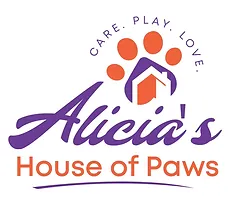Why Luring is Potentially Better Than Free Shaping for Your Easily Frustrated Dog
Quoted Post by Chris Jackman of Enrichmutt

I often see people say “free shaping” is the best method for teaching behaviours and that luring is inferior.
Well for me it depends on the handler and dog, below I’ll discuss my thoughts on why.
Let’s start by defining “Shaping”. This is an umbrella term for three different methods of teaching a terminal behaviour. It incorporates:
Free Shaping – Achieving a terminal behaviour by rewarding small increments of behaviour which is offered by your dog.
Capturing – This is waiting for your dog to offer a terminal behaviour and reinforcing it.
Luring – Using targeting to teach a terminal behaviour, typically a food lure or target stick. Can be incremental or as one movement.
Let’s explore “free shaping”:
Typically trainers will get their treat pouch or food bowl, walk into the middle of a room and just stand there. Their purpose is to wait until the dog offers a behaviour increment they can reinforce which will lead to their terminal (final) goal/behaviour.
Now the teacher has likely already decided a few things:
• What their terminal behaviour is. • An acceptable minimum increment they’ll reinforce. • Increments/behaviours they won’t reinforce.
Now the Dog’s job is to perform a behaviour which matches the trainer’s ideas but other than the trainer standing with something reinforcing, what information do they have?
The answer is very little.
Of course, some sessions will have props which act as clues to what the trainer might be wanting to reinforce… such as a cone they want their dog to wrap around or a stool they want the dog to sit on but this is also using targeting,
So, the dog is likely going to offer a few things in an attempt to get their reinforcement:
• Standing and waiting (Handler focus is reinforced a lot) • A behaviour they last learned in a training session • A behaviour they’ve previously been reinforced for (which could be a lot) • Offer some form of new movement/behaviour (the list is endless)
It’s usually offered in that order.
Now if we’re looking for a new behaviour the dog has to go through a process of trying each step, going through extinction which causes frustration and moving onto the next step. Each time extinction happens arousal goes up which is counterproductive to your dog being able to think.
If your dog is easily aroused or frustrated then it’s likely by step 2 they’re already shouting at you or given up entirely… I often find these types of dogs struggle with disengagement so expecting them to go from handler focus to say turning left is a lot to ask for if they’re lacking this concept.
All your “free shaping” session has done is condition you “standing still with a treat pouch” is frustrating and they will carry this to the next session and likely get frustrated quicker.
Some dogs are resilient and will happily go through this process and for those dogs “free shaping” is a perfectly acceptable and beneficial process.
For those in the camp whose dogs get frustrated quickly and offer undesirable behaviour or give up what options do we have?
The best choice is giving the dog more information about what we want them to do and luring is perfect for this.
We can instantly give the dog more information by using a target or food lure, sometimes even showing them the whole terminal behaviour in one movement.
Sit is a perfect example, we can quickly get a piece of food, put it at the dog’s nose and lift it up and we usually get the whole terminal behaviour in one go.
We then have the option to always rely on a lure to get this behaviour, condition a cue using the existing lure or use latency to see if the dog will offer the behaviour is has been reinforced for doing in previous reps.
We can also use luring to have our dog offer the beginning steps of a behaviour and then use latency to see if they will complete the whole behaviour.
An example would be spin, I could:
Lure dogs head left > Mark > reinforce After a few reps we can use latency to see if the dog will offer a deeper turn of the body then reinforce them. Of course, this still relies on reinforcing an extinction burst but at least the dog has some information for the beginning of the behaviour.
Some dogs find luring frustrating or confusing and I recommend making sure you teach your dog how to follow a lure before using it for shaping terminal behaviours.
Free shaping also takes a lot of skill, if the trainer is experienced then they can definitely efficiently teach behaviours through free shaping but if we’re working with “normal” dog owners, expecting them to accurately free shape may not be fair or efficient.
I think it’s important to emphasize that free shaping is an effective way of teaching new behaviours in certain handler and dog teams and a lot of people prefer it and that’s super cool!
The point of this article is to empower those handlers or dogs that find free shaping frustrating or inefficient and make them feel luring is a perfectly viable option to teaching terminal behaviours.

